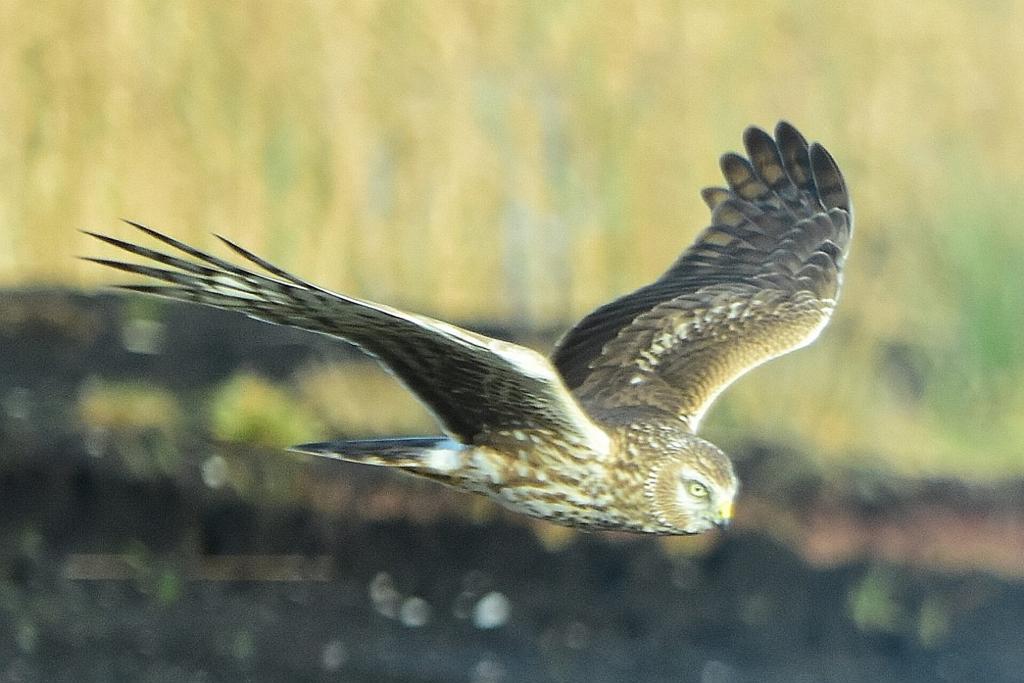News
Minister Noonan launches Public Consultation on Hen Harrier Threat Response Plan
Date Released: Friday, January 12, 2024
Minister for Nature, Heritage and Electoral Reform, Malcolm Noonan TD, has today (January 12th) launched a public consultation on the draft Hen Harrier Threat Response Plan. The Hen Harrier is a territorial ground-nesting bird of prey that has seen significant declines in recent years. It typically breeds in open upland bog and heather moorland, and associated habitats.
The draft Plan identifies actions to address and reverse the key threats and pressures on the bird, arising from the agricultural, forestry and wind energy development sectors, particularly within Hen Harrier Special Protection Areas. The Minister is seeking input from the public on the draft Plan between 12th January and 20th February 2024.
Minister Noonan said:
“Today marks a major milestone in our efforts to protect the Hen Harrier. This extraordinary bird, which is known as ‘the Skydancer’ for its acrobatic courtship displays, has been struggling to survive in Irish landscapes. Numbers are down to somewhere between 85 and 106 breeding pairs. This draft plan, which is the result of considerable effort by many partners and stakeholders over many years, is a very welcome step towards reversing its decline. I encourage everyone to have their say on the draft plan.”
Recent national surveys show that the Hen Harrier is declining in both numbers and in range. In 2015, the national survey for the species estimated that were between 108-157 breeding pairs in the country, indicating a decline of 34% since the first national survey in 1998-2000. Preliminary results from the most recent survey (2022, not yet published) illustrate further declines in both numbers and in the species’ range in the countryside. Estimates now put the breeding population at 85-106 breeding pairs. The population has declined both in the SPAs that were designated for its protection in 2007 under the EU Birds Directive, as well as in the wider countryside.
The Hen Harrier typically forages over ground that is rich in prey (e.g. medium and small-sized birds, small mammals), such as grasslands and winter stubble. Juvenile survival over-winter is poor, and recruitment into the breeding population is thus lower than needed to maintain a stable population. Changes in agricultural practices, forestry and wind energy development are the three key primary pressures and threats on the species, while climate change and recreational pressure in important areas for the species may also play a role.

The draft Plan is prepared as part of the State’s obligations to address pressures and threats to species listed on the Birds Directive and will contribute towards Ireland’s delivery of the EU Biodiversity Strategy for 2030. The Plan will last from 2024-2028. It includes a range of actions, primarily focused on the agricultural, forestry and wind energy development sectors to reverse, minimise and avoid the pressure these sectors place on this declining species.
Niall Ó Donnchú, Director General at the NPWS said:
“The future of the Hen Harrier depends on all stakeholders working together in partnership. The plan is the result of extensive, open and honest engagement, and identifies over sixty actions across a range of sectors. We look forward to continuing our work with partners and stakeholders to implement the plan and deliver its objectives for the Hen Harrier, once finalised and approved by Government.”
Submissions may be made by email or by post to the National Parks and Wildlife Service. Further information is available on the gov.ie website.
